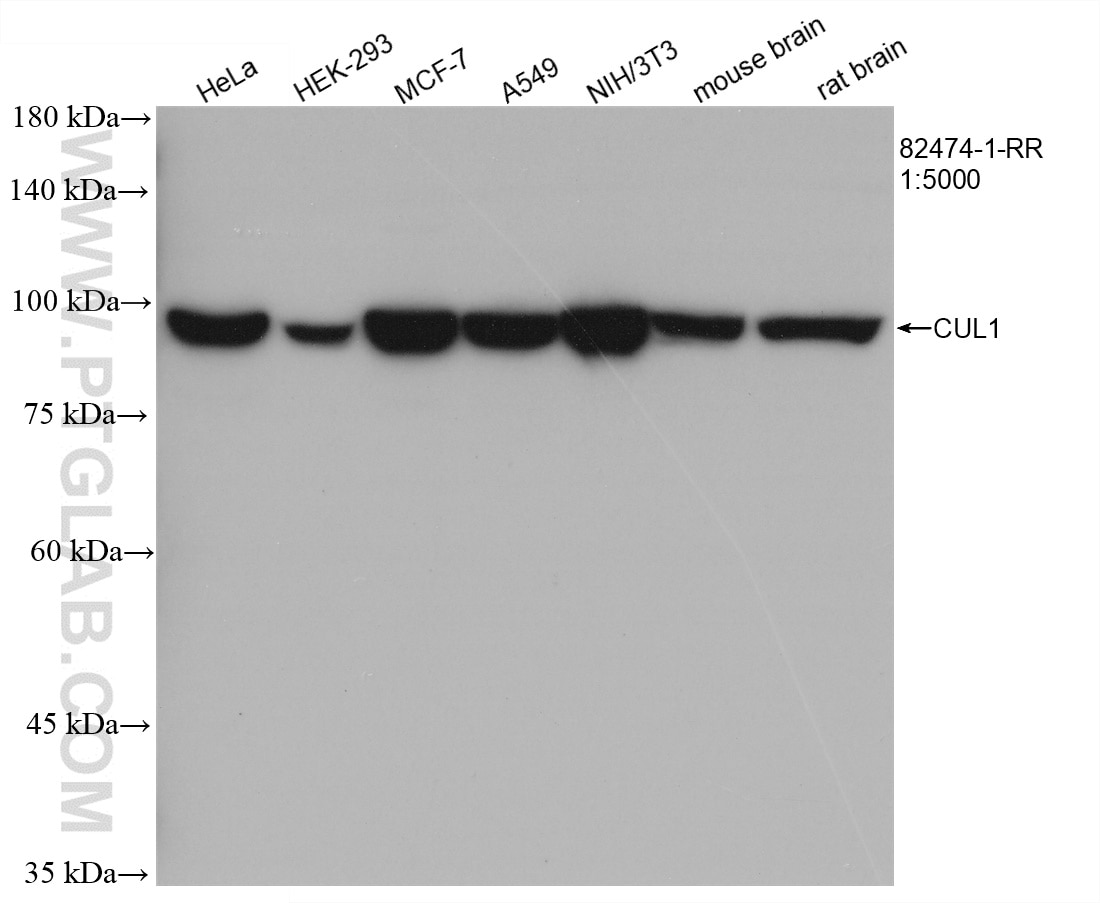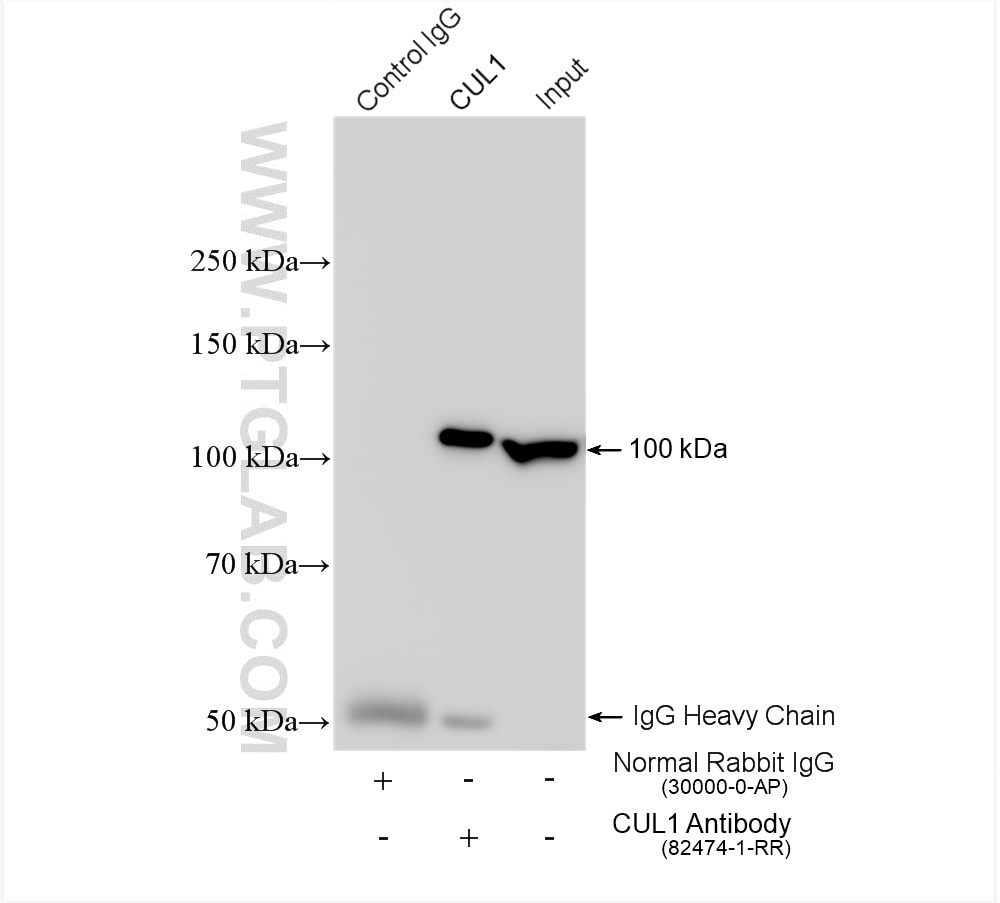CUL1 Recombinant antibody
CUL1 Recombinant Antibody for IP, WB, ELISA
Host / Isotype
Rabbit / IgG
Reactivity
Human, rat, mouse
Applications
WB, IP, ELISA
Conjugate
Unconjugated
CloneNo.
5K17
Cat no : 82474-1-RR
Synonyms
Validation Data Gallery
Tested Applications
| Positive WB detected in | HeLa cells, HEK-293 cells, MCF-7 cells, A549 cells, NIH/3T3 cells, mouse brain tissue, rat brain tissue |
| Positive IP detected in | HeLa cells |
Recommended dilution
| Application | Dilution |
|---|---|
| Western Blot (WB) | WB : 1:2000-1:17000 |
| Immunoprecipitation (IP) | IP : 0.5-4.0 ug for 1.0-3.0 mg of total protein lysate |
| Sample-dependent, check data in validation data gallery | |
Product Information
82474-1-RR targets CUL1 in WB, IP, ELISA applications and shows reactivity with Human, rat, mouse samples.
| Tested Reactivity | Human, rat, mouse |
| Host / Isotype | Rabbit / IgG |
| Class | Recombinant |
| Type | Antibody |
| Immunogen | CUL1 fusion protein Ag3585 相同性解析による交差性が予測される生物種 |
| Full Name | cullin 1 |
| Calculated molecular weight | 90 kDa |
| Observed molecular weight | 90 kDa |
| GenBank accession number | BC034318 |
| Gene symbol | CUL1 |
| Gene ID (NCBI) | 8454 |
| Conjugate | Unconjugated |
| Form | Liquid |
| Purification Method | Protein A purification |
| Storage Buffer | PBS with 0.02% sodium azide and 50% glycerol pH 7.3. |
| Storage Conditions | Store at -20°C. Stable for one year after shipment. Aliquoting is unnecessary for -20oC storage. |
Background Information
The cullin family proteins are scaffold proteins for the Ring finger type E3 ligases. Humans express seven cullin proeins: CUL1-3, CUL4A, CUL4B, CUL5, and CUL7. Each cullin protein can form an E3 ligase similar to the prototype Ring-type E3 ligase Skp1-CUL1-F-box complex. The Cullin-RING-finger type E3 ligases are important regulators in early embryonic development, as highlighted by genetic studies demonstrating that knock-out of CUL1, CUL3, or CUL4A in mice results in early embryonic lethality.
Protocols
| Product Specific Protocols | |
|---|---|
| WB protocol for CUL1 antibody 82474-1-RR | Download protocol |
| IP protocol for CUL1 antibody 82474-1-RR | Download protocol |
| Standard Protocols | |
|---|---|
| Click here to view our Standard Protocols |



